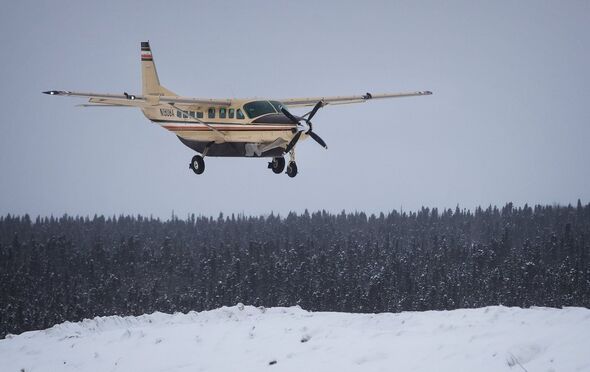Uncovering the Truth: The Search for the Missing Alaska Plane with Ten Passengers
A small passenger plane that disappeared over Alaska’s remote tundra has been located, ending days of uncertainty and intense search efforts. The Cessna 208B Grand Caravan, operated by Bering Air, was carrying ten people, including its pilot, when it vanished from radar on a Thursday afternoon. The flight, which had taken off from Unalakleet at 2:37 p.m., was en route over the vast and isolated Alaskan landscape when it lost contact with air traffic controllers at 3:16 p.m. The sudden disappearance prompted an immediate search operation.
Radar data showed the plane’s last known position over Norton Sound, a treacherous body of water between Nome and Topkok. The disappearance raised alarm, triggering a large-scale rescue mission. Search teams, including members from the Nome Volunteer Fire Department and White Mountain Fire, faced tough conditions—rugged terrain, unpredictable weather, and poor visibility hampered their efforts. The search area covered approximately 34 miles southeast of Nome, with teams navigating by the Iditarod Trail to locate the aircraft.
After hours of searching, an “item of interest” was discovered along the coastline, leading to the identification of the wreckage. Authorities confirmed the discovery of three fatalities among the wreckage, while the other seven passengers were believed to still be inside the plane. Despite the difficult conditions, the U.S. Coast Guard (USCG) intensified efforts to recover the remaining victims.
As investigators examined the wreckage, radar data indicated a sudden drop in speed and altitude around the time of the crash, suggesting a possible midair incident. While theories such as turbulence or engine failure are under consideration, the exact cause remains unclear. Investigators continue to analyze evidence from the wreckage, including maintenance logs and cockpit data.
The harsh Alaskan wilderness, with its extreme cold and ever-changing weather, made the search exceptionally challenging. Yet, the teamwork among local agencies, the U.S. Coast Guard, and Alaska State Troopers ensured a coordinated effort. The tragedy left a deep emotional impact on the local community, who rely heavily on air travel in the remote region. Authorities and families continue to mourn the loss while seeking answers about the crash’s cause.
The disappearance of a Bering Air Cessna 208B Grand Caravan over Alaska’s remote tundra has reignited discussions on aviation safety in the state. The plane, carrying ten people, vanished on a routine flight, prompting an intense search amid harsh weather conditions. Despite recovery efforts, three passengers were confirmed dead, with seven still trapped inside. Investigators are focused on radar data showing a sudden drop in altitude and speed, raising concerns over potential midair incidents. This tragic event highlights the unique challenges of flying in Alaska, where extreme conditions and isolated terrain make air travel dangerous.
